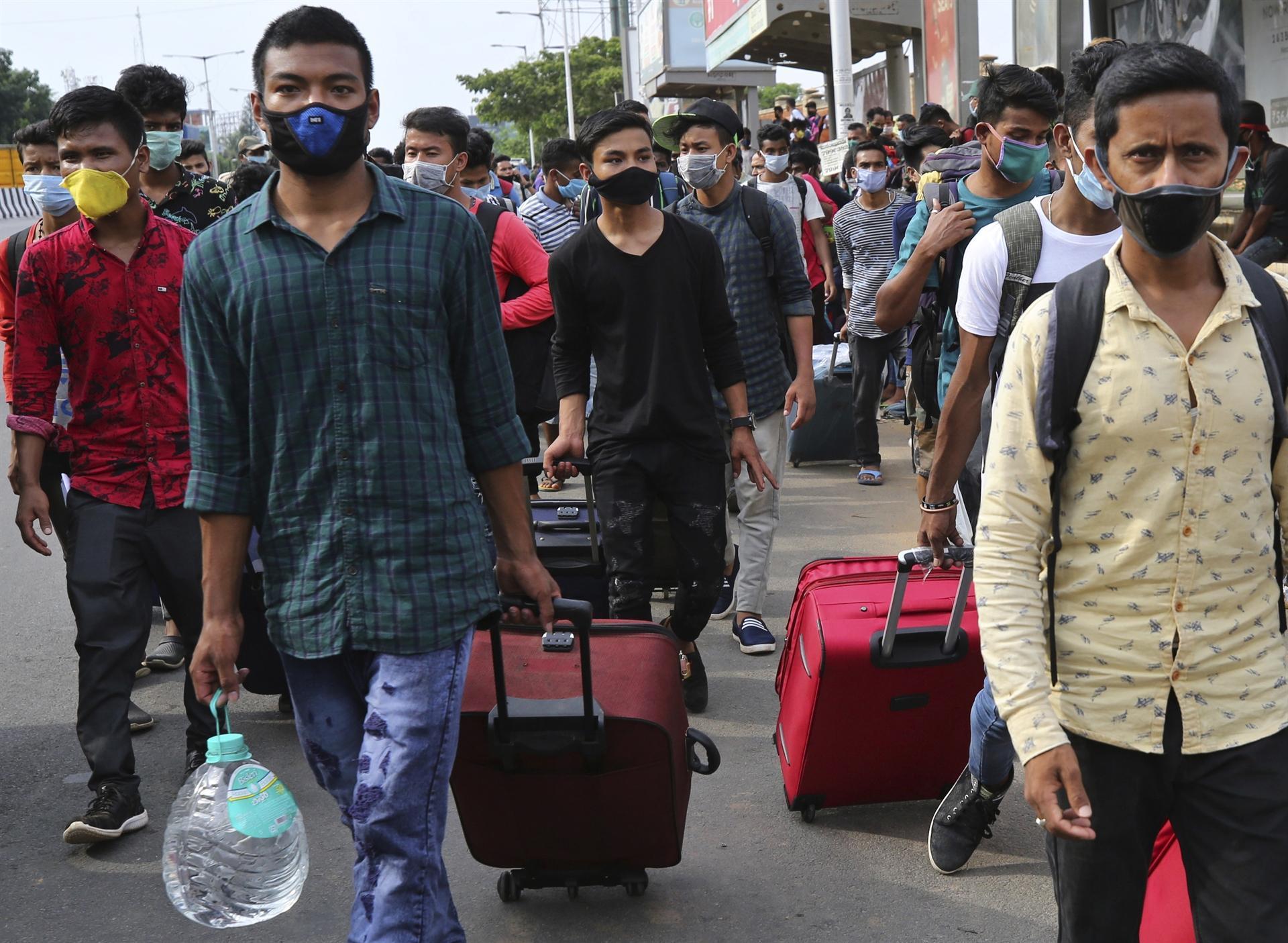India, Bangladesh brace for cyclone in the midst of pandemic
NEW DELHI-The Associated Press

A strong cyclone was moving toward India and Bangladesh on May 19 as authorities were trying to evacuate millions of people while maintaining social distancing.
Amphan is expected to make landfall on Wednesday morning, and forecasters warned of extensive damage from high winds, heavy rainfall, tidal waves and some flooding in crowded cities like Kolkata.
The cyclone had winds of 220-230 kilometers per hour (136 -142 miles per hour) and is forecast to weaken before landfall around India’s West Bengal state and Bangladesh.
It is the second super cyclone on record that has formed over the Bay of Bengal, said Mrutyunjay Mohapatra, India’s meteorological chief. The first of that classification was the devastating 1999 cyclone in Odisha state that left nearly 10,000 dead.
“This type of cyclone can be disastrous...It is completely unsafe,” Mohapatra said.
Amphan’s winds are whirling 700 kilometers (435 miles) from its eye as it approaches land. It’s forecast to pass between the seaside resort town of Digha in India’s West Bengal state and Hatiya Island in Bangladesh with a weaker wind speed of 165 to 175 kph (102-108 mph).
Several districts of West Bengal will be most impacted by the storm, said Mohapatra, warning of uprooted trees, electric poles and damage to old or temporary housing.
Flooding was a risk in Kolkata due to crowding and poor drainage and the storm surge would raise river levels in the Bengal delta, he said.
The Meteorological Department in the Bangladesh said the cyclone could flood vast spans in southwestern and southern Bangladesh from tidal waves 4 to 5 feet higher than normal, along with heavy rainfall and high wind speeds.
Bangladesh authorities have asked maritime ports to maintain danger signal up to 7 while 19 coastal districts and their offshore islands were also at the risk of severe destruction. Fishing trawlers and boats in Bay of Bengal have been asked to take shelter until further notice.
After reaching land, the cyclone is expected to move away fast and weaken by May 21.
The eye of the storm is likely to pass through the Sunderban mangrove forests, one of the largest single tracts of mangrove forests in the world. The forests are likely to absorb some impact of the cyclone, officials said.
Junior Minister for Disaster Management and Relief Enamur Rahman in Bangladesh said he ordered local authorities to prepare thousands of cyclone shelters and makeshift structures to take more than 5 million people to safety before the cyclone crosses the region. The evacuation has not started yet.
















